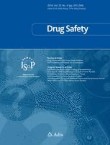
Abstract
Introduction
Risk evaluation and mitigation strategy (REMS) programs are intended to improve safe use of US Food and Drug Administration-approved drugs. However, controversy exists over whether they consistently accomplish this goal.
Objective
We aimed to assess how initiation of the erythropoiesis stimulating agents (ESAs) darbepoetin alfa and epoetin alfa changed following implementation and enforcement (following a 1-year post-implementation grace period) of a prominent REMS program warning physicians against use in cancer patients with hemoglobin above 10 g/dL.
Methods
Using claims data from a large US commercial insurance company, we conducted interrupted time-series analyses of darbepoetin alfa and epoetin alfa initiation among adult cancer patients in the 12 months before REMS program implementation, after REMS program implementation, and after REMS program enforcement. We also evaluated differences in inappropriate initiation (hemoglobin tests all above 10 g/dL in the prior month) between the periods.
Results
In total, we identified 3456 darbepoetin alfa initiators and 2632 epoetin alfa initiators. Over the study period, the monthly number of initiators per 100,000 patients with cancer fell from 119 to 32 for darbepoetin alfa and from 82 to 34 for epoetin alfa. However, non-significant post-REMS program implementation level and slope changes per 100,000 adult patients with cancer were observed for darbepoetin alfa (level 0.03 [95% confidence interval (CI) −14.98 to 15.05]; slope 1.94 [95% CI −0.22 to 4.10]) and epoetin alfa (level −4.10 [95% CI −16.85 to 8.65]; slope −0.52 [95% CI −2.35 to 1.32]). Non-significant post-REMS program enforcement level and slope changes were also seen for both drugs (darbepoetin alfa level 1.58 [95% CI −0.58 to 3.74, slope −0.28 [95% CI −15.29 to 14.73]; epoetin alfa level 1.58 (95% CI −0.26 to 3.42], slope 5.74 [95% CI −7.01 to 18.49]). Finally, non-significant changes in inappropriate darbepoetin a lfa (60% vs. 53% vs. 57%, p = 0.68) and epoetin alfa (53% vs. 53% vs. 46%, p = 0.41) initiation were observed between the three study periods.
Conclusion
REMS program implementation and enforcement were not associated with significant changes in ESA initiation, adding to concerns over the degree to which certain REMS programs enhance patient safety.
Δεν υπάρχουν σχόλια:
Δημοσίευση σχολίου
Σημείωση: Μόνο ένα μέλος αυτού του ιστολογίου μπορεί να αναρτήσει σχόλιο.